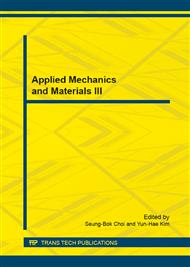p.948
p.952
p.958
p.964
p.968
p.972
p.979
p.983
p.988
The Collision Behavior of Droplets Splitted from a Droplet that Rebounded on Super-Hydrophobic Surface
Abstract:
Droplet rebounding on super-hydrophobic surfaces is critical to suppress pollution flashover (i.e. enhancement of pollution flashover-voltage) and to reduce ice accumulation on insulators. This paper presents a novel way to reduce water accumulation on surface via the elastic collision between droplets splitted from a droplet that has rebounded from super-hydrophobic surface. The water-mass that contacted with surface will be reduced resultantly. The influence of hydrophobicity of the surface on contact time and spreading time of water droplets are discussed. The collision behavior between the splitted droplets is indicated by the surface charge that was induced by the rebounding droplets on super-hydrophobic surface. Experimental results show that the super-hydrophobic surface endows water droplets with shorter contact time, spreading time than those values obtained on a bare glass. Specific Web and Reynolds numbers can lead to the elastic rebounding between water droplets, delaying the water contact with the super-hydrophobic surface. The contact electrification between the rebounded droplet and the super-hydrophobic surface renders the droplet charged, thus determines the collision behavior of the splitted droplets that born from the rebounded droplet.
Info:
Periodical:
Pages:
968-971
Citation:
Online since:
January 2015
Authors:
Keywords:
Price:
Сopyright:
© 2015 Trans Tech Publications Ltd. All Rights Reserved
Share:
Citation:


